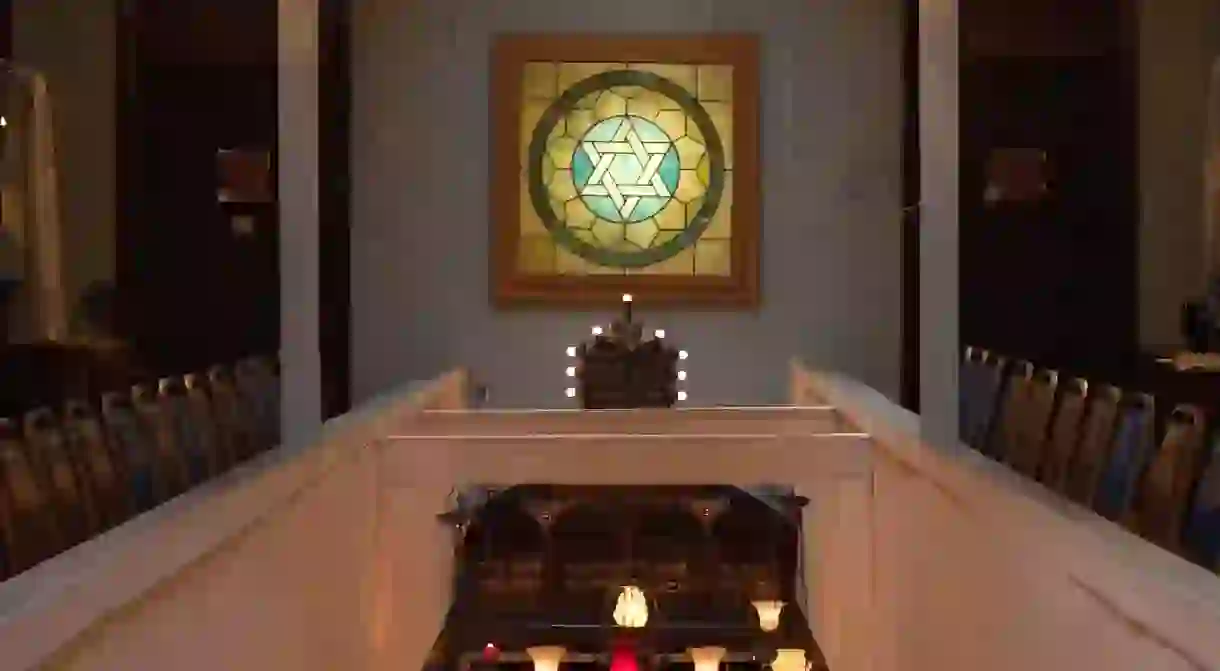The West’s Last Romaniote Synagogue: NYC’s Kehila Kedosha Janina

Kehila Kedosha Janina is a structure that’s easy to miss. Hidden in plain view on a quiet block of the Lower East Side, Kehila Kedosha Janina was built in 1927 and is the last Romaniote Synagogue in the Western Hemisphere. It was added to the National Register of Historic Places in 1999 and was deemed a New York City landmark in 2004; it’s a small but important site that deserves more attention.
The Romaniots are a Jewish community that can trace their roots back to Greece over 2,000 years ago. They’re one of the most understudied Jewish groups, and Greek minorities, but there are concentrated populations in both Greece and Israel.
A Romaniote congregation was first established in New York City in 1906 by Greek Jewish immigrants from Ioannina. During this time approximately one quarter of Greek Jews left Greece, many of them bound for the United States or France. And while there were hundreds of synagogues on the Lower East Side at this time, there was nothing specifically for the Romaniots (they called themselves the Yanniotes) to practice their particular traditions, liturgies, and language. When a young Yanniote man in New York City died in an industrial accident, the need for a specific Romaniote synagogue became urgent. None of the Yiddish-speaking or Spanish-speaking Jewish burial societies would bury the Yanniote man and, though one eventually did give him a Jewish burial, it became clear that in New York City, the Greek-speaking Jewish community was ‘different.’

Finally, in 1921, the community acquired the property on Broome Street, and by 1927 Kehila Kedosha Janina was completed. From then until World War II, the Romaniote community thrived. During these years the synagogue was packed for services as the community in New York grew. Most of the Yanniotes married others from the same group, carrying traditions from Greece to new homes and families being established in New York. Many of them worked in textiles, making robes, nightgowns, and aprons. Over the years, however, the community has dwindled. Many have returned to Greece as they are known for being fiercely proud of their heritage. Despite this, Kehila Kedosha Janina is one of the few synagogues still active on the Lower East Side, serving approximately 3,000 people via its mailing list, while one of its founding families, the Colchamiro family, still has three of its sons on the Board of Directors.

In 1997, a museum was set up to tell the unique story of the Romaniots. It’s open for tours every Sunday or by appointment. The synagogue also still holds services for Shabbat and Jewish holidays, and their annual Greek Jewish festival draws massive crowds. It’s remarkable how this small synagogue puts on such a large festival, and it only seems to grow each year. This year the festival was on May 22nd, and guests enjoyed Greek music, ate Greek Kosher food, learned Greek dance, and experienced this unique culture.
The synagogue is truly a remarkable piece of history that’s often overlooked. It’s one of the last bastions for the Romaniote community and its museum and annual festival are not to be missed.














